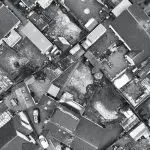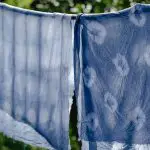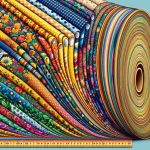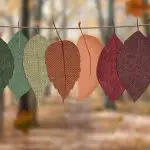Do you struggle with converting fabric yardage to leather square footage?
This article will guide you through the process step by step, providing you with the necessary calculation methods, factors to consider, and helpful tools and resources.
Avoid common mistakes and learn useful tips and tricks for accurately converting fabric yardage to leather square footage.
With practical examples of real projects, you’ll gain the confidence to tackle this conversion with ease.
Let’s get started!
Table of Contents
Understanding the Basics of Fabric Yardage and Leather Sq Ft
To understand the basics of fabric yardage and leather sq ft, you’ll need to familiarize yourself with the measurements and conversions. When it comes to material selection, fabric yardage refers to the amount of fabric needed for a project, while leather sq ft measures the area of leather required. Understanding these measurements is crucial for accurate cost comparison and ensuring you have enough material for your project.
Fabric yardage is measured in yards and is typically sold in increments of 1/4, 1/2, or whole yards. To calculate fabric yardage, you need to know the width of the fabric, which is usually 45 inches or 60 inches. You can then multiply the width by the desired length in yards to determine the required fabric yardage.
On the other hand, leather is measured in square feet. Leather sq ft is determined by multiplying the length and width of the leather piece. It’s important to note that leather is usually sold in square feet or square meters, and you may need to convert the measurements accordingly.
Understanding these measurements and conversions will help you make informed decisions when it comes to material selection and cost comparison. Whether you’re working with fabric or leather, knowing the basics of fabric yardage and leather sq ft is essential for any project.
Converting Fabric Yardage to Leather Sq Ft: Calculation Methods
Calculate the amount of leather you need by converting the fabric yardage measurements into square feet. To ensure accuracy in the conversion process, it’s important to consider certain factors that can affect the final result.
Here are some key points to keep in mind:
-
Fabric Type: Different fabrics have varying levels of stretch, which can impact the amount of leather required. Adjustments may need to be made to account for this stretch factor.
-
Cutting Efficiency: The pattern layout and cutting method used can affect the amount of fabric needed. Efficient cutting techniques can help optimize material usage and minimize waste.
-
Seam Allowance: Remember to include an allowance for seams, as this can increase the overall fabric yardage required.
-
Pattern Complexity: Intricate patterns or designs may require additional fabric to ensure the desired outcome is achieved. Take into account any extra fabric needed for pattern matching or directional prints.
-
Material Width: The width of the fabric can affect the conversion calculation. Take note of the fabric width and adjust the measurements accordingly.
Factors to Consider When Converting Fabric Yardage to Leather Sq Ft
When converting fabric yardage to leather sq ft, there are several factors you need to consider.
Firstly, the impact of material thickness is crucial as leather tends to be thicker than fabric, which can affect the final measurements.
Secondly, the accuracy of the conversion formula is essential to ensure precise calculations and avoid any discrepancies.
Lastly, pattern layout considerations play a significant role in determining how much leather will be required, as efficient utilization of the material can help minimize waste and save costs.
Material Thickness Impact
The thickness of the material greatly affects the conversion from fabric yardage to leather sq ft. When it comes to material thickness impact, there are a few key factors to consider:
-
Flexibility: Thicker materials tend to be less flexible, which can affect how easily they can be manipulated and shaped into different pieces.
-
Drape: Thinner materials have a better drape and flow, making them ideal for certain designs and patterns.
-
Durability: Thicker materials are generally more durable and resistant to wear and tear, making them suitable for items that require long-lasting strength.
-
Pattern Complexity: Thicker materials may not be as suitable for intricate or complex patterns, as they can be more difficult to work with and may not hold their shape as well.
Understanding the impact of material thickness is crucial when converting fabric yardage to leather sq ft, as it helps ensure that the final product meets your design requirements.
Conversion Formula Accuracy
It’s important to consider the accuracy of the conversion formula when determining the amount of fabric needed for a project. While conversion formulas can be helpful in estimating fabric yardage to leather square footage, it’s crucial to recognize their limitations and the importance of precision. A slight miscalculation in the formula can lead to costly mistakes and wasted materials. To emphasize this point, let’s take a look at the following table:
| Fabric Yardage | Leather Square Footage |
|---|---|
| 1 yard | 18 square feet |
| 2 yards | 36 square feet |
| 3 yards | 54 square feet |
| 4 yards | 72 square feet |
As you can see, even a small increase in fabric yardage results in a significant increase in leather square footage. This highlights the need for accurate calculations to ensure you have enough material for your project. Remember, precision is key when converting fabric yardage to leather square footage.
Pattern Layout Considerations
To ensure your pattern pieces fit efficiently on the fabric, consider the layout and placement of each piece.
By utilizing pattern layout techniques, you can maximize fabric usage and minimize waste. Start by examining the shape and size of each pattern piece. Arrange them strategically on the fabric, considering the grainline and any directional prints.
Pay attention to the fabric’s shrinkage factor as well. If the fabric is prone to shrinkage, it’s essential to adjust the pattern layout accordingly. Give yourself some extra margin when cutting to account for potential shrinkage after washing.
Additionally, be mindful of pattern matching if your fabric has a specific design or motif. Taking these factors into account will result in a more efficient use of fabric and a well-executed final product.
Tools and Resources for Converting Fabric Yardage to Leather Sq Ft
You can easily find online tools and resources to help you convert fabric yardage to leather square feet. These tools and resources provide a convenient way to calculate and convert the measurements accurately.
Here are some reasons why these tools and resources are beneficial:
-
Time-saving: Instead of manually calculating the conversion, these tools provide instant results, saving you time and effort.
-
Accuracy: With the help of these tools, you can ensure accurate measurements, eliminating the risk of errors in your projects.
-
Convenience: Online resources allow you to access the conversion tools from anywhere, anytime, making it convenient for your needs.
By utilizing these tools and resources, you can streamline your design process and ensure that you have the correct measurements for your leather projects. Whether you are a beginner or an experienced designer, these online tools and resources can be invaluable in helping you convert fabric yardage to leather square feet accurately and efficiently.
Common Mistakes to Avoid When Converting Fabric Yardage to Leather Sq Ft
One common mistake when converting fabric measurements to leather is not accounting for the difference in stretch and drape between the two materials. This can lead to inaccurate measurements and result in wastage of both time and money. To avoid this mistake, it is important to understand how leather differs from fabric and adjust your measurements accordingly.
When measuring fabric, you typically consider its stretch and drape to determine the amount needed for a project. However, leather does not have the same level of stretch and drape as fabric, which means you will need to account for this when converting measurements. Keep in mind that leather is more rigid and less forgiving when it comes to mistakes, so it is crucial to be precise.
To ensure accurate measurements, it is recommended to use a flexible measuring tape specifically designed for leather. This will help you get precise measurements without distorting the leather. Additionally, when converting fabric yardage to leather square footage, it is important to account for any pattern repeats or directional designs that may affect the layout and cutting process.
Tips and Tricks for Accurate Conversion of Fabric Yardage to Leather Sq Ft
When converting fabric yardage to leather square footage, it’s important to keep a few tips and tricks in mind to ensure accuracy. By following these guidelines, you can avoid common mistakes and successfully convert the measurements.
Here are some helpful tips for accurate conversion:
-
Consider material shrinkage: Leather can shrink during the tanning process, so it’s crucial to account for this when converting fabric yardage. Research the specific type of leather you’re working with and adjust your measurements accordingly.
-
Measure irregular shapes carefully: Leather hides often come in irregular shapes, which can make conversion challenging. Take precise measurements of each section and calculate the square footage separately for accuracy.
-
Use a conversion chart: Keep a conversion chart handy to help you quickly determine the square footage based on the fabric yardage. This can save you time and prevent errors in your calculations.
-
Add extra for pattern matching: If your project requires pattern matching, be sure to add extra leather to account for this. It’s always better to have extra material than to run short and be unable to match the pattern properly.
-
Double-check your calculations: Before making any cuts, double-check your measurements and calculations to ensure accuracy. Mistakes can be costly, so taking the time to verify your numbers is essential.
Practical Examples: Converting Fabric Yardage to Leather Sq Ft in Real Projects
To accurately convert fabric yardage to leather square footage in real projects, it’s helpful to consider the specific requirements of each design. Pattern adjustments play a crucial role in this conversion process. When converting fabric yardage to leather square footage, it’s important to take into account the direction of the pattern and any additional panels or pieces that may be required due to the nature of the design. By making these pattern adjustments, you can ensure that the final leather piece will be able to accurately replicate the fabric design.
Another factor to consider when converting fabric yardage to leather square footage is the cost comparison. Leather tends to be more expensive than fabric, so it’s essential to calculate the cost accurately to avoid any surprises. Take into account the width of the leather and how it compares to the width of the fabric. This will help you determine the amount of leather required and the corresponding cost.
Conclusion
In conclusion, converting fabric yardage to leather sq ft requires understanding the basics and using the right calculation methods. It is important to consider factors such as the thickness and type of leather.
Utilizing tools and resources can help ensure accurate conversions. Avoiding common mistakes and following tips and tricks will also contribute to accurate results.
By applying these principles in real projects, you can confidently convert fabric yardage to leather sq ft and achieve successful outcomes.
- Is Chiffon Fabric Itchy? - April 23, 2024
- Are There Different Types of Chiffon Fabric? - April 23, 2024
- Can You Paint Chiffon Fabric? - April 23, 2024







